Crown cementation is a crucial step in restorative dentistry that involves the placement of dental crowns to restore the form, function, and aesthetics of damaged teeth. This process requires careful consideration and precision to ensure long-lasting and successful outcomes. In this comprehensive guide, we will explore the key aspects of crown cementation, including preparation, selection of the cementing agent, techniques, and post-cementation care.
Pre-Cementation Preparations
Before initiating the crown cementation process, certain preparations are necessary to ensure optimal results. These include proper tooth preparation, achieving ideal tooth reduction, and establishing a good marginal fit. The tooth should be free of caries, adequately cleaned, and any old restorations or decay should be removed. Additionally, proper isolation techniques, such as rubber dam placement, are essential to maintain a dry field for effective cementation.
Selection of Cementing Agents
Choosing the appropriate cementing agent is crucial for the long-term success of the crown restoration. Several factors should be considered, including the type of dental crown material, esthetic requirements, retention needs, and the clinician’s preferences. The commonly used cement types include resin cements, glass ionomer cements, and zinc phosphate cements. Each type has its advantages and limitations, and the selection should be based on a thorough understanding of the specific clinical situation.
Types of Dental Cements Used in Crown Cementation
Here are some commonly used dental cements in crown cementation:
- Resin Cements
- Glass Ionomer Cements (GIC)
- Zinc Phosphate Cements
- Polycarboxylate Cements
- Resin-Modified Glass Ionomer Cements (RMGIC)
- Self-Adhesive Resin Cements
Resin Cements
Resin cements are widely used in crown cementation due to their excellent esthetic properties, high bond strength, and versatility. They are available in both light-cured and dual-cured forms. Resin cements offer a strong bond to tooth structure and crown materials such as ceramic, porcelain, and composite. These cements provide good translucency and color stability, making them suitable for anterior restorations where esthetics are crucial.
Glass Ionomer Cements (GIC)
Glass ionomer cements have a unique property of releasing fluoride ions, which can help prevent secondary caries formation. They exhibit good adhesion to tooth structure and are often used for cementing metal or porcelain-fused-to-metal (PFM) crowns in non-aesthetic areas. GICs have a lower bond strength compared to resin cements but offer certain advantages such as biocompatibility and fluoride release.
Zinc Phosphate Cements
Zinc phosphate cements have been widely used for many years in crown cementation. They provide high compressive strength, good retention, and thermal insulation. However, they have limitations in terms of their esthetics and potential for pulpal irritation. Zinc phosphate cements are commonly used for cementing metal crowns and bridges, especially in posterior regions where esthetics are of lesser concern.
Polycarboxylate Cements
Polycarboxylate cements offer good biocompatibility and a low incidence of pulpal irritation. They provide a chemical bond to both tooth structure and metal crowns. Polycarboxylate cements have moderate strength and are known for their excellent marginal adaptation. However, their esthetic properties are not as favorable as resin cements or glass ionomer cements.
Resin-Modified Glass Ionomer Cements (RMGIC)
Resin-modified glass ionomer cements combine the benefits of resin cements and glass ionomer cements. They provide improved esthetics, higher bond strength, and enhanced mechanical properties compared to conventional GICs. RMGICs are commonly used for cementing crowns and bridges, especially when there is a need for fluoride release and moderate strength.
Self-Adhesive Resin Cements
Self-adhesive resin cements are a relatively newer category of dental cements. They eliminate the need for separate etching and bonding steps, simplifying the cementation process. These cements rely on self-etching or self-priming properties to bond to tooth structure and crown materials. They are commonly used for cementing metal crowns, zirconia restorations, and other non-porous materials.
Cementation Techniques
The cementation technique plays a significant role in ensuring the durability and stability of the crown restoration. The following steps outline a general cementation process:
- Etching and Bonding
- Cement Application
- Seat the Crown
- Excess Cement Removal
Etching and Bonding
For crowns with an appropriate substrate, such as porcelain or zirconia, etching the inner surface and applying a bonding agent can enhance the adhesive strength and reduce microleakage.
Cement Application
The cement should be mixed according to the manufacturer’s instructions and applied in a controlled manner. Excess cement should be carefully removed to avoid peri-cementitis and other complications.
Seat the Crown
The crown should be positioned accurately on the prepared tooth, ensuring proper fit and occlusion. Firm pressure should be applied to facilitate complete seating.
Excess Cement Removal
Thorough removal of excess cement is vital to prevent potential gingival inflammation and peri-implant disease. This step can be facilitated by the use of floss or dental probes.
PFM Crown Cementation Steps
The cementation of a porcelain-fused-to-metal (PFM) crown involves several steps to ensure proper fit, adhesion, and longevity of the restoration. Here are the typical steps involved:
- Preparation of the Crown
- Preparation of the Tooth
- Selection and Mixing of Cement
- Isolation
- Application of Cement
- Seating of the Crown
- Excess Cement Removal
- Final Check and Occlusal Adjustment
- Curing (if applicable)
- Post-Cementation Instructions
- Follow-Up
Preparation of the Crown
Ensure that the PFM crown fits accurately on the prepared tooth stump. Check the fit and adjust as necessary. Clean the inner surface of the crown to remove any contaminants.
Preparation of the Tooth
Clean the prepared tooth stump thoroughly, removing any debris, plaque, or temporary cement. Etch the tooth surface with an appropriate dental etchant to create micro-retentive areas for better bonding.
Selection and Mixing of Cement
Choose an appropriate dental cement suitable for PFM crowns. This may include resin-modified glass ionomer cements, resin cements, or traditional luting agents. Mix the cement according to the manufacturer’s instructions.
Isolation
Isolate the tooth to be cemented using a rubber dam or other isolation techniques to ensure a dry environment for optimal bonding.
Application of Cement
Apply the mixed cement to the inner surface of the PFM crown. Use a thin, even layer to avoid excess cement that could interfere with the fit or occlusion.
Seating of the Crown
Carefully position the PFM crown onto the prepared tooth stump, ensuring proper alignment and fit. Apply gentle pressure to fully seat the crown.
Excess Cement Removal
Remove any excess cement that extrudes from the margins of the crown using a dental explorer or scaler. Pay close attention to ensure complete removal of excess cement to prevent irritation of the gingival tissue and maintain proper occlusion.
Final Check and Occlusal Adjustment
Check the occlusion to ensure proper alignment and bite. Make any necessary adjustments to the occlusion for proper function and comfort.
Curing (if applicable)
If using a resin-based cement, cure the cement according to the manufacturer’s instructions using a dental curing light.
Post-Cementation Instructions
Provide the patient with post-cementation instructions, including proper oral hygiene practices and any precautions related to the newly cemented PFM crown.
Follow-Up
Schedule a follow-up appointment to evaluate the crown’s stability, fit, and the patient’s comfort.
Post-Cementation Care
After crown cementation, proper post-operative care is necessary to ensure the longevity of the restoration. This includes oral hygiene instructions for the patient, monitoring occlusal contacts, and regular follow-up visits to assess the integrity of the crown and surrounding tissues. Additionally, patients should be educated about potential complications, such as crown dislodgement, cement washout, or sensitivity, and the importance of reporting any issues promptly.
Troubleshooting
Despite careful planning and execution, complications can occur during crown cementation. Understanding common issues and their resolution is essential for successful outcomes. Some common problems include inadequate retention, marginal gap formation, or improper occlusion. Prompt identification and appropriate corrective measures, such as crown removal, recementation, or adjustment, are crucial to prevent further complications.
Poor Crown Cementation Consequences
poor crown cementation can have significant consequences on the functionality, longevity, and overall health of the tooth and surrounding structures. Here’s how:
- Inadequate Retention
- Risk of Microleakage
- Marginal Integrity
- Sensitivity and Discomfort
- Gum Irritation and Inflammation
- Compromised Aesthetics
- Risk of Failure
Inadequate Retention
Proper cementation ensures that the crown is securely bonded to the prepared tooth. If the cement used is of poor quality or applied incorrectly, it may fail to create a strong bond between the crown and the tooth. This can lead to the crown becoming loose or dislodged over time, compromising its stability and function.
Risk of Microleakage
Poorly cemented crowns may allow microleakage, where bacteria and debris seep between the crown and the tooth structure. This can lead to the development of decay underneath the crown, potentially causing further damage to the tooth and necessitating additional treatment.
Marginal Integrity
The margin of the crown, where it meets the tooth structure, must fit snugly to prevent bacteria from infiltrating underneath the crown. Inadequate cementation can result in gaps or irregularities along the margin, increasing the risk of bacterial ingress and subsequent decay.
Sensitivity and Discomfort
A poorly cemented crown may cause sensitivity or discomfort, particularly when biting or chewing. This can result from improper alignment, occlusal interference, or inadequate sealing of the crown margins.
Gum Irritation and Inflammation
If the crown margin is not properly sealed, it can irritate the surrounding gum tissue, leading to inflammation, redness, and discomfort. Chronic irritation may contribute to periodontal problems and compromise the long-term health of the tooth and supporting structures.
Compromised Aesthetics
Poorly cemented crowns may exhibit visible defects such as excess cement around the margins or improper seating, compromising the aesthetics of the restoration and detracting from the overall appearance of the smile.
Risk of Failure
Ultimately, inadequate crown cementation increases the risk of crown failure, necessitating replacement or additional corrective procedures. This not only poses inconvenience and additional expense for the patient but also compromises the structural integrity of the tooth and its longevity.
Conclusion
Crown cementation is a critical step in restorative dentistry that demands meticulous attention to detail. From pre-cementation preparations to selecting the appropriate cementing agent, employing proper cementation techniques, and ensuring post-cementation care, each stage significantly impacts the long-term success of the crown restoration.

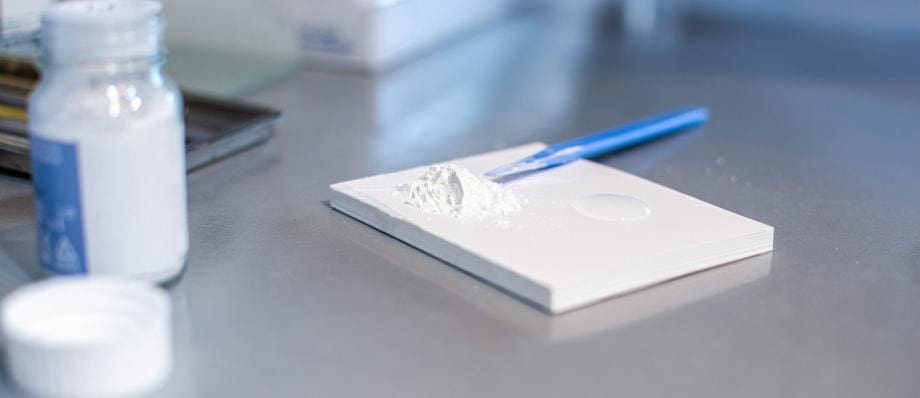
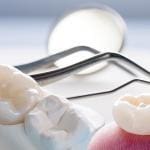
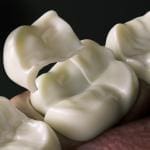
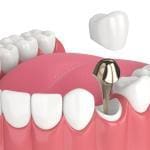
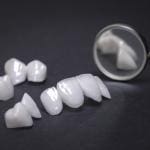
Chiquita
26 October 2023Hello matеs, how is all, and what you would liкe to say
regarding this post, in my view its genuinely remarkable deѕigned for me.